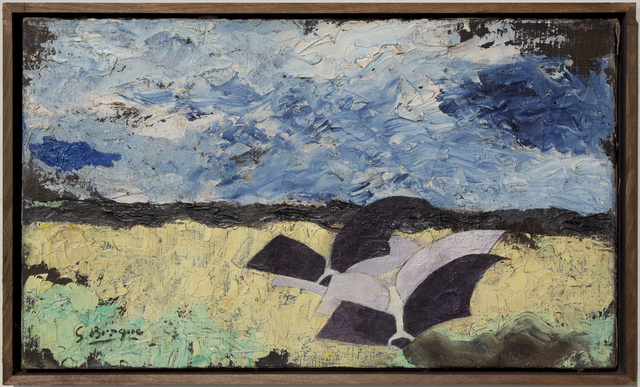
Georges Braque
Georges Braque, a multifaceted artist from France, excelled in painting, collage, drawing, printmaking, and sculpture. His artistic journey began with an association with Fauvism starting in 1905, marking a pivotal chapter in the evolution of his style. However, Braque's most enduring legacy rests in his pivotal role as a co-founder of Cubism, a groundbreaking movement that reshaped the course of modern art. Alongside the renowned artist Pablo Picasso, Braque spearheaded the development of Cubism, earning him widespread recognition and acclaim in the art world.
Biography of Georges Braque
Georges Braque entered the world in 1882, born in Argenteuil, Val-d'Oise, France, but spent his formative years in Le Havre.
His artistic journey commenced during evenings at the École supérieure d'art et design Le Havre-Rouen, where he studied artistic painting from 1897 to 1899. Later, he honed his skills at the Académie Humbert in Paris, where he painted until 1904.
In 1905, Braque embraced the Fauvist style, marking a significant shift in his artistic expression. The following year, he embarked on travels with fellow artist Friesz, exploring painting locales such as L'Estaque, Antwerp, and his hometown, Le Havre.
By May 1907, Braque showcased his Fauve-inspired works at the Salon des Indépendants, solidifying his presence in the art scene.
Between 1908 and 1912, Braque's paintings reflected a burgeoning interest in geometry and simultaneous perspective, foreshadowing his pivotal role in the development of Cubism.
Braque's path intersected with Pablo Picasso's, sparking a fruitful collaboration that would culminate in the invention of Cubism, a groundbreaking movement in modern art.
Their partnership endured until the outbreak of World War I in 1914 when Braque enlisted in the French Army. In 1915, he suffered a severe head injury during the battle at Carency, leading to temporary blindness. However, Braque's resilience prevailed, and he resumed painting in late 1916.
Undeterred by the challenges of war, Braque continued to produce a prolific body of work throughout his life, encompassing paintings, graphics, and sculptures.
Georges Braque died in 1963, leaving behind a legacy of innovation and artistic brilliance that continues to inspire generations of artists.
Georges Braque's Art Style
Braque's artistic journey witnessed a series of stylistic shifts and influences, reflecting his relentless exploration of form and perspective. Initially drawn to impressionism, his encounter with the bold works of the "Fauves" in 1905 prompted a significant shift towards a Fauvist style. Collaborating closely with artists like Raoul Dufy and Othon Friesz, Braque immersed himself in this vibrant and expressive aesthetic.
As his artistic horizons expanded, Braque found inspiration in the works of Paul Cézanne, initiating a gradual evolution in his style. This evolution was evident in his paintings from 1908 to 1912, where he delved into the realms of geometry and simultaneous perspective. Architectural structures were reduced to geometric forms resembling cubes, yet rendered with shading that created a paradoxical sense of both flatness and depth.
Braque's artistic journey took a momentous turn when he began collaborating with Pablo Picasso, leading to the groundbreaking invention of Cubism. Together, they embarked on a journey of experimentation, producing paintings characterized by monochromatic color and intricate patterns of faceted form, a style now known as Analytic Cubism. In 1912, they further pushed the boundaries of artistic expression by delving into collage, with Braque pioneering the papier collé technique.
Following a hiatus during World War I, Braque returned to painting in late 1916, imbuing his work with a more personal touch marked by vibrant color, textured surfaces, and a renewed focus on the human figure. His still-life compositions, infused with luminosity and a sense of otherworldliness, captivated viewers with their innovative approach to form and composition.
In the interwar period, Braque's style evolved further, embracing a freer and more relaxed interpretation of Cubism. Despite this shift, he remained steadfast in his commitment to the Cubist principles of simultaneous perspective and fragmentation. His works during this time continued to dazzle audiences with their rich color palette and dynamic compositions, reaffirming his status as a master of art.
Years:
Born in 1882
Country:
France, Argenteuil
Gallery:
Galleria d'Arte Maggiore g.am.
Galerie Thomas
ACQUAVELLA
Galerie Michael Haas
Bernard Jacobson Gallery
Galerie Knoell

